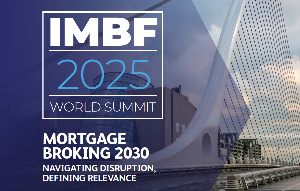
Even if that does not happen immediately, in the RBNZ’s latest six month Credit Conditions Survey, New Zealand’s 15 registered banks think a recovery will be led by owner-occupiers, particularly as house prices are starting to show signs of a recovery and interest rates are at or near their peak.
The survey covers credit conditions between 1 April and 31 September and asks how banks expect they will evolve over the next six months.
Demand for new mortgages continued to fall over those six months, following further increases in borrowing costs and banks’ serviceability test rates.
However, banks reported an increase in the availability of residential mortgage credit over the six months, following materially tighter conditions over 2022.
Both owner-occupier and investor activity has remained subdued in the higher interest rate environment, with low consumer confidence and an uncertain trajectory for house prices. Some potential buyers are delaying investment until future government policy is known.
Banks also noted the impact of households’ living expenses on borrowers’ affordability tests.
While some banks increased mortgage serviceability test rates slightly further, the effect on credit availability was offset by an amendment to the Credit Contracts and Consumer Finance Act in May to free up borrowers’ discretionary spending rules and easing of the Reserve Bank’s LVR restrictions in June.
The RBNZs’ latest statistics show $5.8 billion of gross mortgage lending in August, up by $0.4b from a year ago. Low-deposit lending to owner-occupiers rose from about 6% of activity in May to 8-9% in Aug – still below the new 15% speed limit, but the highest share since late 2021. In turn, about 75% of those low-deposit flows for owner-occupiers was absorbed by first home buyers.
Banks expect demand for new residential mortgages will stabilise over the next six months with buyer confidence returning.
However, the ANZ has raised interest rates this week: one year fixed rate to 7.99% with a special rate of 7.39% for borrowers with 20% equity and salaries paid into their ANZ account. The bank’s six month rates are now 7.95% and 7.35%, while its four and five-year rates will rise by 25 points, and its three-year rates by 20 points to 7.49% for a standard rate and 6.89% for a special.
Meanwhile, property development has been particularly subdued with high borrowing costs, strong inflation in construction costs and labour shortages placing pressure on developers’ margins, limiting the number of feasible projects.
Demand for buying off-the-plan remains subdued, leading to few proposed projects being deemed financially feasible.
Banks have maintained cautious lending standards for property developments and pre-sale requirements continue to restrict new lending. Some banks noted that with the expected increase in activity in residential property markets, pre-sale requirements might ease for experienced developers with projects in well-located areas.
Stabilising house prices are expected to support a recovery in development activity, with developers also expecting to gain greater certainty over future interest rates and government policy in coming months.
Commercial property lending declining
Demand for commercial property lending declined significantly over the survey period.
For property investment, banks are seeing continued interest in higher quality offerings such as prime office space.
However, they also noted higher interest rates are creating a mismatch between the sale price which buyers and sellers require to achieve acceptable returns and transaction volumes which have subsequently been low.
With interest rates projected to remain high, further slowing in demand for commercial investment is anticipated.
While banks have eased requirements for interest coverage ratios (ICRs) on new commercial investment lending, interest markups have increased to reflect heightened risks within the sector.
Higher interest costs have limited the volume of new lending, with some investors unable or unwilling to contribute enough equity to meet banks’ minimum ICRs.
This is expected to remain a limiting factor while interest rates are elevated. Banks’ appetite for new lending is largely contained to higher quality properties.
Lack of confidence
Demand for credit from SMEs has largely been for working capital, with a lack of business confidence, high borrowing costs, and broader economic outlook meaning non-essential capital expenditure is being put on hold.
With financing for capital expenditure comprising the largest share of SME lending, this has led to overall decline in credit demand.
Banks expect ongoing use of working capital facilities as businesses experience cost pressures and a period of slowing demand, particularly for SMEs reliant on the agricultural sector.
Demand for credit from large corporations has varied across industries.
Capital expenditure has reduced sharply for commodity-based export firms but has been relatively stable in other sectors such as tourism.
There has been little merger and acquisition activity in recent months, but lending for this purpose is a small component of banks’ corporate portfolios.
Despite low levels of business confidence and high borrowing costs, banks reported ongoing demand for funding for sustainability and ESG-related projects.
Slowing consumer spending is expected to drive ongoing demand for working capital and liquidity facilities, particularly for sectors such as food and beverage.




Comments
No comments yet.
Sign In to add your comment